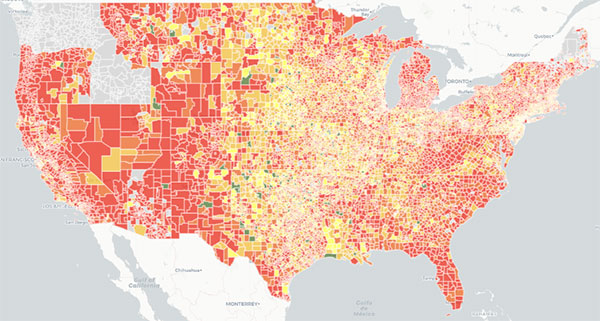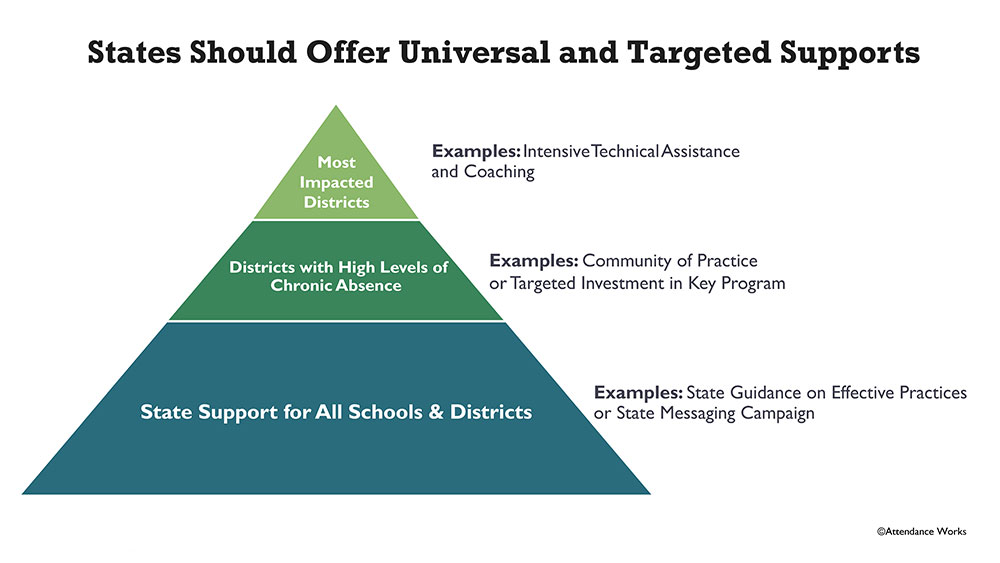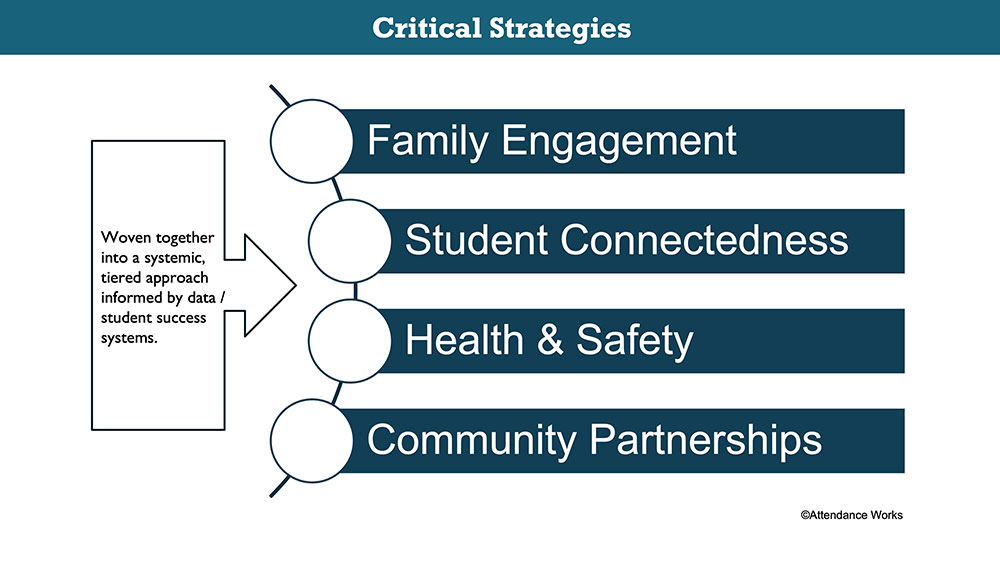
Chronic absenteeism has risen dramatically in our country. A close look at 2021-22 school year data reveals that every state in the country is experiencing a substantial increase in the number of schools and districts with high and extreme levels chronic absenteeism.
Although attendance is typically considered a matter for local education agencies, the unprecedented levels and intensity of post-pandemic chronic absenteeism compels action from state education agencies (SEA) and policymakers. State actions and resources can be used to build awareness of what chronic absence is and how to reduce it. They can advance and sustain district and local action designed to improve attendance and engagement.
States don’t have to start from scratch. They can identify and build upon successful local efforts in their state. They can build upon or tailor successful approaches used in other states. Some states, for example, are making publicly available chronic absence data from districts that enables everyone to identify patterns and trends that need solutions at scale. Others have attendance improvement plans in place or are offering evidence based interventions that can work to improve attendance following the pandemic.

Everyone Graduates Center at Johns Hopkins School of Education developed an interactive map showing district level chronic absence rates in every state. Use the map to scrutinize which districts are struggling with high and extreme chronic absence and identify successful efforts.
The challenge
As we emerge from the Covid-19 pandemic, addressing chronic absenteeism, missing 10% or more of school for any reason, is critical. Attending school on a regular basis is essential for student success on many levels: school offers opportunities to learn, forge relationships and develop social skills so necessary to engage with others inside and outside of class and eventually at work.
As such, chronic absence is a vital sign for assessing the health and academic well-being of individual students, student groups and even school communities. High levels of chronic absence reflect systemic challenges affecting large numbers of students and families that require programmatic and policy solutions.
As discussed in the first two data analyses in this series, nationwide data from the US Department of Education’s EdFacts revealed chronic absence nearly doubled, rising from 16% before the pandemic to nearly 30% by 2021-22 school year. In fact, 14.7 million students missed so much school they are at academic risk. While national data for 2022-23 has not been released, available state data shows chronic absence is starting to decline from its pandemic-impacted peak, but it remains at unprecedented levels.
This attendance crisis has a broad impact on learning, given that two-thirds (66%) of enrolled students attended a school with high (20-29% or extreme (30%+) levels of chronic absence. When chronic absence reaches high levels , the educational experience of peers, not just those frequently missing school, is also affected.
District level chronic absence rates are also highly elevated. Nationwide, the percent of districts with high or extreme levels of chronic absenteeism increased from 25% (4,044) to 63.1% (11,035). Click here to see data showing chronic absence levels for districts by state for 2021-22 and pre-pandemic (SY 2017-18).
Chronic absence is now more widespread and more concentrated than ever before. It is elevated and more intense in the places where chronic absence was a challenge before the pandemic, and now is a significant challenge in many schools that have never experienced such large numbers of chronically absent students.
Every state in the nation experienced a substantial increase in the number of schools with high and extreme levels of chronic absenteeism. Comparing data over time within a state is an excellent approach to understanding if attendance is improving. Comparing data across states is tricky. States often use different definitions of what constitutes a day of attendance.
Examining individual state data
We used the school year data to produce charts for every state showing levels of high and extreme chronic absence for schools as well as their demographics. Making such data publicly available is helpful for ensuring action and identifying if further steps must be taken to improve data quality.
If possible, we recommend states conduct their own analysis with 2022-23 school year data, since it is not yet available at the federal level. See this analysis from PACE of the 2022-23 school year data in California. This analysis only uses data published by the California Department of Education to make comparisons with prior years to ensure consistency, given some differences between their state attendance accounting practices and the federal government.
The solution: taking a comprehensive, data-informed approach
Although these numbers are challenging, the current high tide of absenteeism can be reduced when districts, with state support, help schools to take a comprehensive, data informed approach to improving attendance that is grounded in an understanding of local assets and root causes of chronic absence. Learn more in All Hands on Deck: Today’s Chronic Absenteeism Requires A Comprehensive District Response and Strategy.
What can states do?
States and SEAs are critical to ensuring districts are equipped to advance effective approaches to improving attendance in their schools, especially because today’s elevated levels of chronic absence can easily overwhelm a district’s capacity to respond. We recommend states adopt a tiered approach. States should offer basic resources to help all schools and districts, particularly those with limited experience addressing chronic absence. States should consider providing more intensive support to the districts facing the most significant attendance challenges.

We recommend the following actions for states when implementing a tiered approach:

This analysis is the final in a three-part series of articles unpacking the recent chronic absence data collection released by the U.S. Department of Education for the 2021-22 school year. Read part one, Rising Tide of Chronic Absence Challenges Schools, and part two All Hands on Deck: Today’s Chronic Absenteeism Requires A Comprehensive District Response and Strategy.
By Hedy Chang, Executive Director, Attendance Works; Robert Balfanz, Director, Everyone Graduates Center, Johns Hopkins University; and Vaughan Byrnes, Senior Research Associate, Everyone Graduates Center, Johns Hopkins University. Interactive map developed by Daniel Princiotta, Assistant Research Scientist, Center for Social Organization of Schools, Johns Hopkins University.